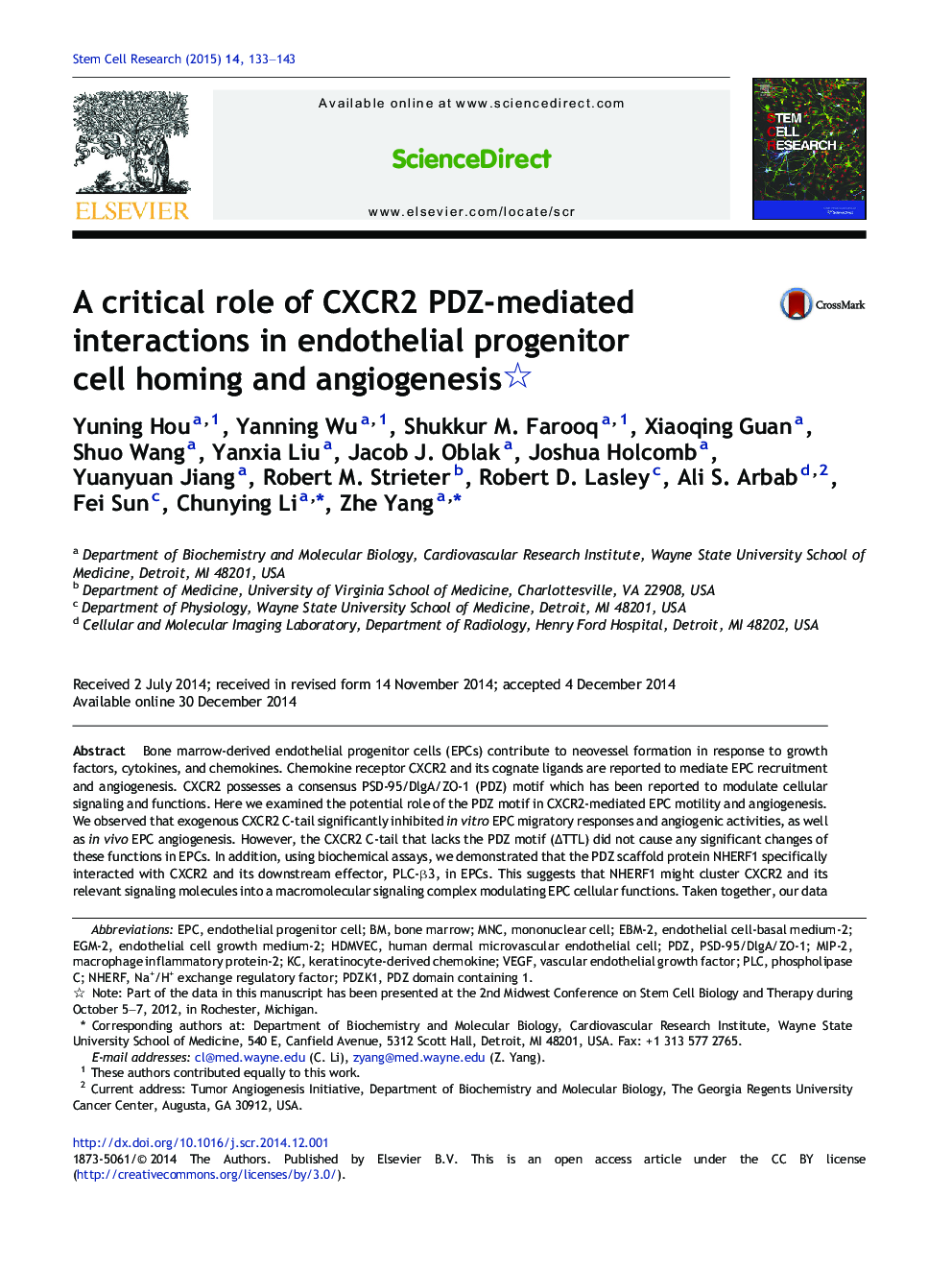| Article ID | Journal | Published Year | Pages | File Type |
|---|---|---|---|---|
| 2094051 | Stem Cell Research | 2015 | 11 Pages |
Highlight•The role of the PDZ motif in CXCR2-mediated EPC motility and angiogenesis is examined.•The CXCR2 macromolecular complex regulates EPC adhesion and migration in vitro.•CXCR2 macromolecular complex regulates EPC angiogenic activity in vivo and in vitro.•CXCR2 macromolecular complex is important in signaling transduction.•CXCR2 complex might be a novel therapeutic target in angiogenesis-dependent diseases.
Bone marrow-derived endothelial progenitor cells (EPCs) contribute to neovessel formation in response to growth factors, cytokines, and chemokines. Chemokine receptor CXCR2 and its cognate ligands are reported to mediate EPC recruitment and angiogenesis. CXCR2 possesses a consensus PSD-95/DlgA/ZO-1 (PDZ) motif which has been reported to modulate cellular signaling and functions. Here we examined the potential role of the PDZ motif in CXCR2-mediated EPC motility and angiogenesis. We observed that exogenous CXCR2 C-tail significantly inhibited in vitro EPC migratory responses and angiogenic activities, as well as in vivo EPC angiogenesis. However, the CXCR2 C-tail that lacks the PDZ motif (ΔTTL) did not cause any significant changes of these functions in EPCs. In addition, using biochemical assays, we demonstrated that the PDZ scaffold protein NHERF1 specifically interacted with CXCR2 and its downstream effector, PLC-β3, in EPCs. This suggests that NHERF1 might cluster CXCR2 and its relevant signaling molecules into a macromolecular signaling complex modulating EPC cellular functions. Taken together, our data revealed a critical role of a PDZ-based CXCR2 macromolecular complex in EPC homing and angiogenesis, suggesting that targeting this complex might be a novel and effective strategy to treat angiogenesis-dependent diseases.
